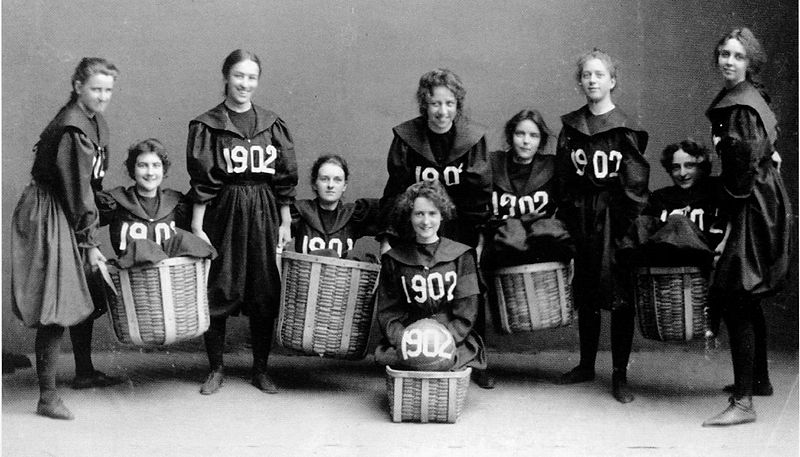Among the many barbs that Humbert Humbert lobs at Lolita’s poor, doomed mother, Charlotte Haze, is that she is “large.” Sure, his gaze upon this woman, who has unfortunately reached the same decrepit age that I am now, is never kind. To him, she is dull-witted, her French is horrendous, she is simple and slovenly. But above all, she is that most unfeminine of qualities: the opposite of small. Humbert is not alone in prizing a woman for being of diminutive stature, although Humbert is a terrible example, since we all know what his deal is, one need not venture far from Nabokov’s masterpiece to find male narrators who wax rhapsodic over women with tiny hands, delicate feet, and small bodies that fit into to crooks of their arms. If you, like me, are a woman of formidable mien (I topped out around six feet tall at the age of twelve), chances are that you long ago abandoned hope that the day would come when you would find a man glowing upon the page about his romantic interest, a heroine who can fit into your clothes.
I know I did. And then I found this:
“She was tall.
She was nearly six feet tall, which was several inches taller than Smoky…Her name, George said, was Daily Alice.
He took her hand, looking up. “A long drink of water,” he said, and she began to laugh…Smoky, not knowing why the old chestnut should be so funny, looked from one to another with a seraphic idiot’s grin, his hand unrelinquished.
It was the happiest moment of his life.”
I would walk from the city to just about anywhere find this sentiment, this idea that a tall woman would provide a male protagonist the happiest moment of his life. John Crowley’s Little, Big, considered by many one of the greatest fantasy novels of our time, deals thematically with size, so it is no wonder that Daily Alice Drinkwater and her sister Sophie are described as “delicate giantesses,” and considered great beauties. When the book’s hero, the affable Smoky Barnable, makes his foot journey from The City to Edgewood, the magical, ever-expanding house where the Drinkwater family lives amid fairies and wonderment, he is not only fulfilling a prophecy (in my crueler moments of self-directed cynicism, I used to wonder how a girl as tall as me gets married without there being a prophecy involved), he is also immersing himself in a world bigger than himself, with women to match.
Though I recall that my most adored children’s book heroine, Lois Lowry’s Anastasia Krupnik, was identified as the tallest girl in her class, Anastasia never ages past thirteen, and even though her height came in a distant third after her intelligence and her willingness to get herself into precarious situations (such as working as a scullery maid at the home of her classmate Daphne’s wealthy grandmother), she was still depicted as awkward. Very awkward. And awkwardness takes you many places in a middle-grade book, but it does not send you careening into anyone’s arms, unless it’s the arms of a consoling parent, or perhaps a doctor.
I took an informal poll at that most informal of polling arenas, Facebook, asking all 732 of my well-read friends to alert me to works of fiction where women of height are considered objects of romantic attention. MQR blogger Gina Balibrera reminded me of Sarah, Plain and Tall. Tall, right there in the title, and yet the fact that she is plain and the sturdy wife of a widowed farmer caused me to forget about dear Sarah. She was a mail-order bride, after all, and though I can appreciate that the wife of a farmer must be swiftly replaced for economic reasons, I always got the impression that Sarah’s plainness and tallness prevented her from being desired outside of what her broad shoulders and large hands could contribute to the work of a family farm. Several friends voted for Sissy Hankshaw of Tom Robbins’ Even Cowgirls Get the Blues. Robbins deals in extremes, and so it is no wonder that one of his heroines, in all of their messy, Robbinsian sexuality, would tower over her men not unlike the outsized females of an R. Crumb cartoon. V.V. Ganeshananthan offered the heroine of Elizabeth McCracken’s short story, “It’s Bad Luck to Die.” Lois is six feet tall, at least a foot taller than her husband Tiny, the charming tattoo artist who was “bowled over by all those square inches of skin, how [Lois] was so big and still not fat.” According to Lois, the narrator, he fell for her right away.
I know that tall women are not categorically unattractive. I am aware of the existence of, say, runway models, and the fact that most of Rod Stewart’s wives and Prince’s female protégées tower over their men in a way that is expected, even glamorous. Finding Daily Alice Drinkwater through the eyes of Smoky, her betrothed, is more of a rare novelty than any great act of romantic transgression. And even though I now have a fantastic list of tall lady protagonists, I find myself returning again and again to Little, Big, not only because it is a wonderful book. Never mind what happens to Smoky and Daily Alice later on. All I ever wanted to see after years of feeling enormous and ridiculous is right there in chapter one. Those coveted arrows of love that seemed forever to be aimed at girls who were never forced into conversations about basketball or rude queries about their shoe size, all for Daily Alice.
Reading those words was the happiest moment of my life as a tall girl who loves books.

